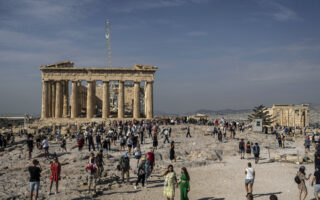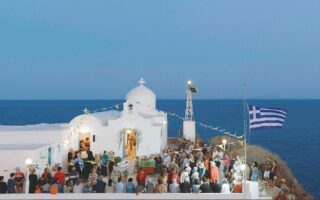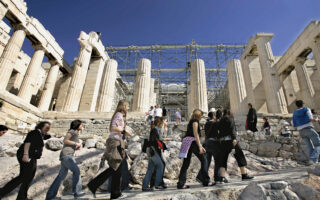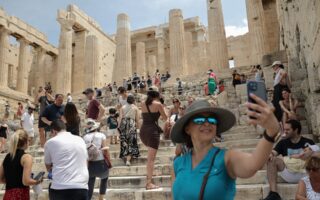Naxos: Cultural heritage and challenges
A visit to the unspoiled Cycladic island is like a magical journey through history
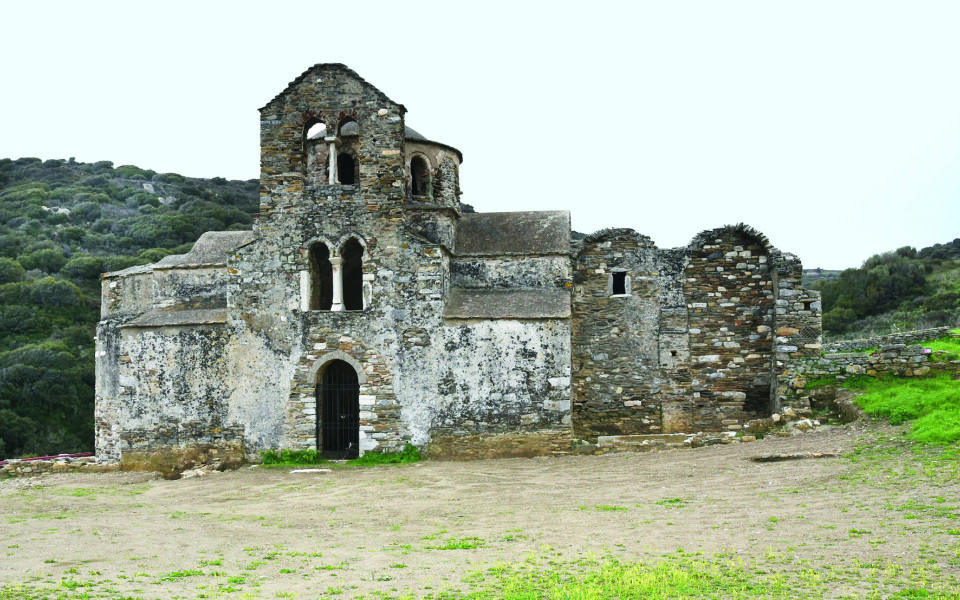
In recent years, we have been mere spectators in a joyless drama. From the decks of ferries and the windows of our hotels to the crowded shores of popular beaches and the tables of upscale nouvelle-cuisine-style tavernas serving ceviche, we watch helplessly as tourism swallows the Cyclades. I recently had the experience of witnessing the tiny islet of Ano Koufonisi being devoured: boats full of tourists disembarking and cramming into inches of sand under scorching heat. The island is already overflowing with visitors, yet development continues, while its beaches cannot expand. However, amidst this onslaught, there are places that resist, like the island of Naxos.
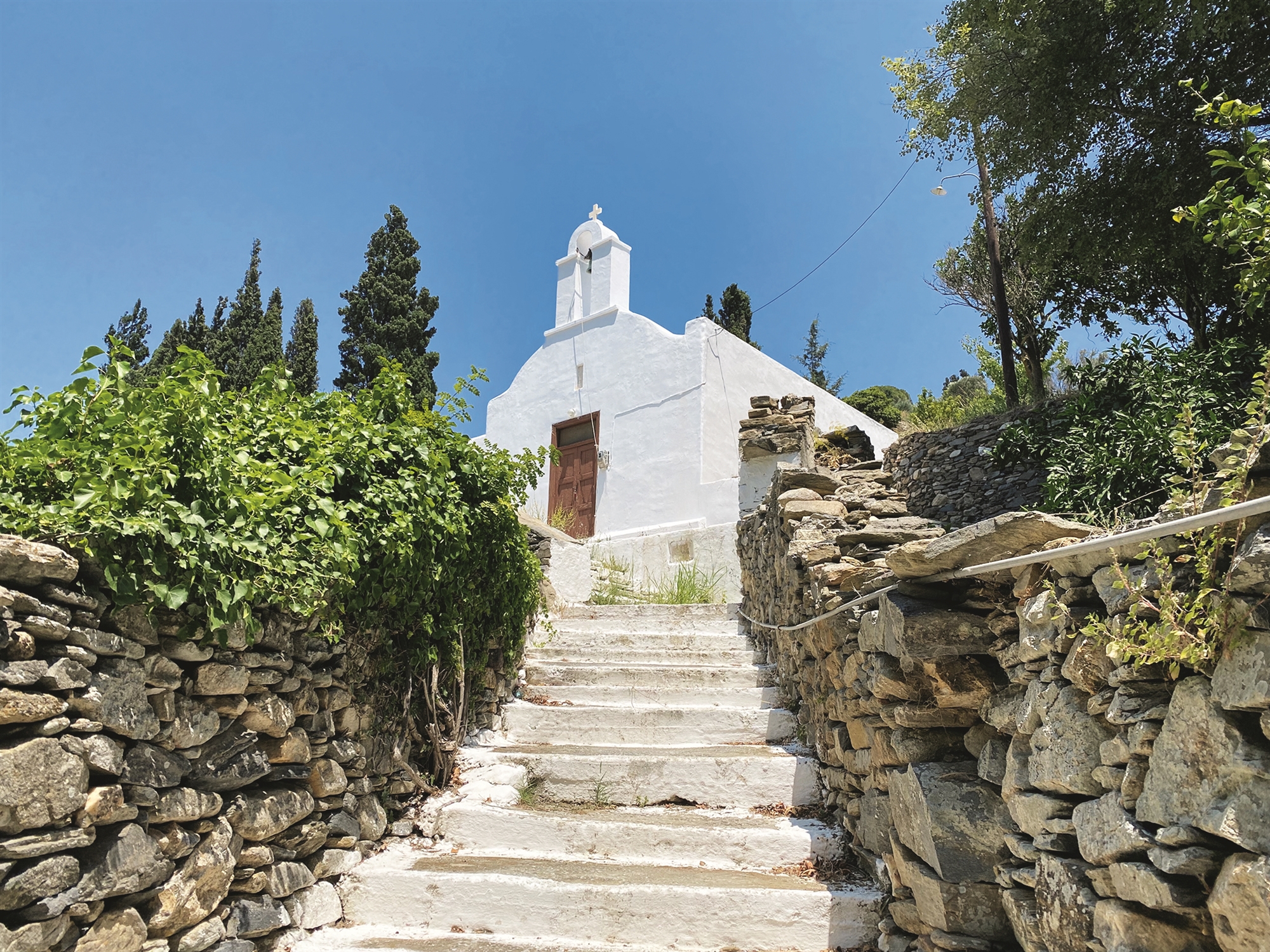
Naxos holds a distinct advantage due to its size, offering kilometers of coastline for people to enjoy, serving delicious meat and fish thanks to its thriving agricultural production, and providing decent accommodation without compromising on quality. Additionally, it boasts a rich cultural heritage. Within its 430 square kilometers, one encounters incredible monuments from different eras. The Kouros of Flerio, near the village of Melanes, appears to rest in the shade of a large tree, while the Temple of Demeter in Sagri and the Temple of Apollo (Portara) leave visitors in awe. The Venetian castle (Kastro) at Hora will eventually house one of the most beautiful and captivating archaeological museums in Greece, scheduled for completion by the end of 2026 to showcase this magnificent history. However, there is a lesser-known chapter of this history that is now being rewritten, reshaping our understanding of the Cyclades in the Middle Ages. Dimitris Athanasoulis, the hardworking head of the Ephorate of Cycladic Antiquities, has managed to redate monuments, unveil pre-Iconoclasm church frescoes, and highlight remarkable churches like Agia Kyriaki, featuring iconographic representations dating back to the 8th-9th century. As I explored the country churches, I felt the echoes of Byzantine history. The historic Agios Georgios in Melanes, once a Roman bath adorned with frescoes depicting naked bathers, serves as a reminder of the coexistence of paganism and Christianity in successive layers of time, Panagia Drosiani, with its charming architecture, and Panagia Rachidiotissa, an elegant white structure, are just a few examples of the countless small churches scattered throughout the countryside, preserving the keys to the past and whispering stories of the Byzantines, Franks and Arabs, showcasing the Naxians’ resilience during the Middle Ages, guarding Thermopylae. These churches are treasure troves of knowledge, unparalleled anywhere else in the Cyclades. The most captivating part of Naxos for me was its untouched northern region, which also became the source of my greatest sorrow.
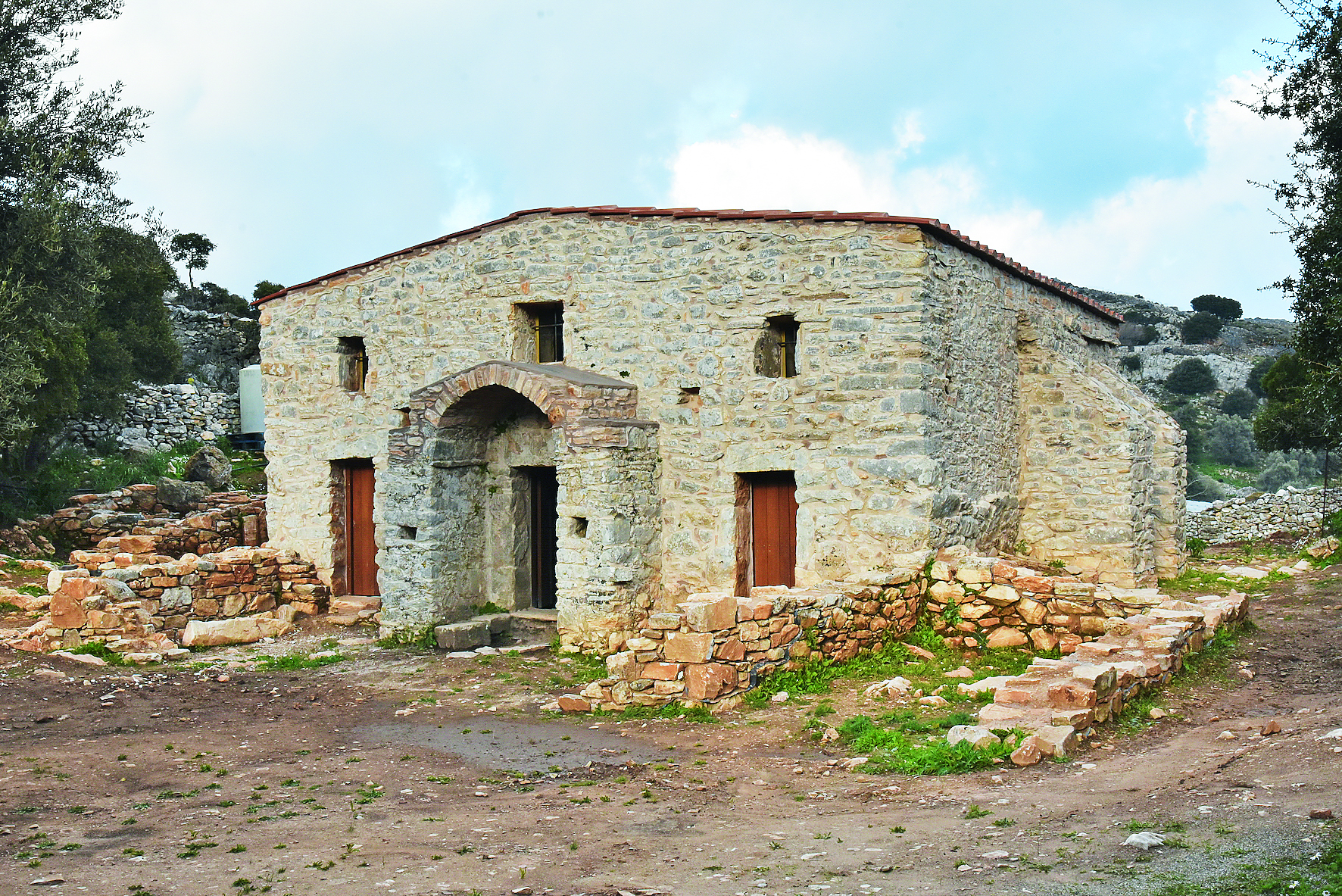
At the far end of Naxos, near the village of Koronos, lies a tiny abandoned rural settlement called Atsipapi, consisting of dry-stone houses surrounding the small church of Agios Isidoros. Archaeologists plan to restore this church, which also features pre-Iconoclasm frescoes. In close proximity to this masterpiece, amid breathtakingly beautiful scenery, construction has been under way since 1997 on the largest church in the Cyclades, dedicated to the miraculous icon of Panagia Argokoiliotissa. The colossal church, so imposing that it seems to have fallen from the sky, remains unfinished. The residents’ ambition, then and now, is to transform it into a nationally renowned pilgrimage site, much like the Holy Church of the Virgin Mary Evangelistria on the island of Tinos, attracting religious and conference tourism. The ambitious project includes plans for a 300 sq.m. museum-library, a 420 sq.m. dining area, a 740 sq.m. conference hall, a 500-seat outdoor amphitheater, parking facilities, and more. The project has already been included in the Cohesion Fund and will be funded by both the Cohesion Fund and the European Union, with a budget of 8 million euros, equivalent to the cost of the Naxos Archaeological Museum.
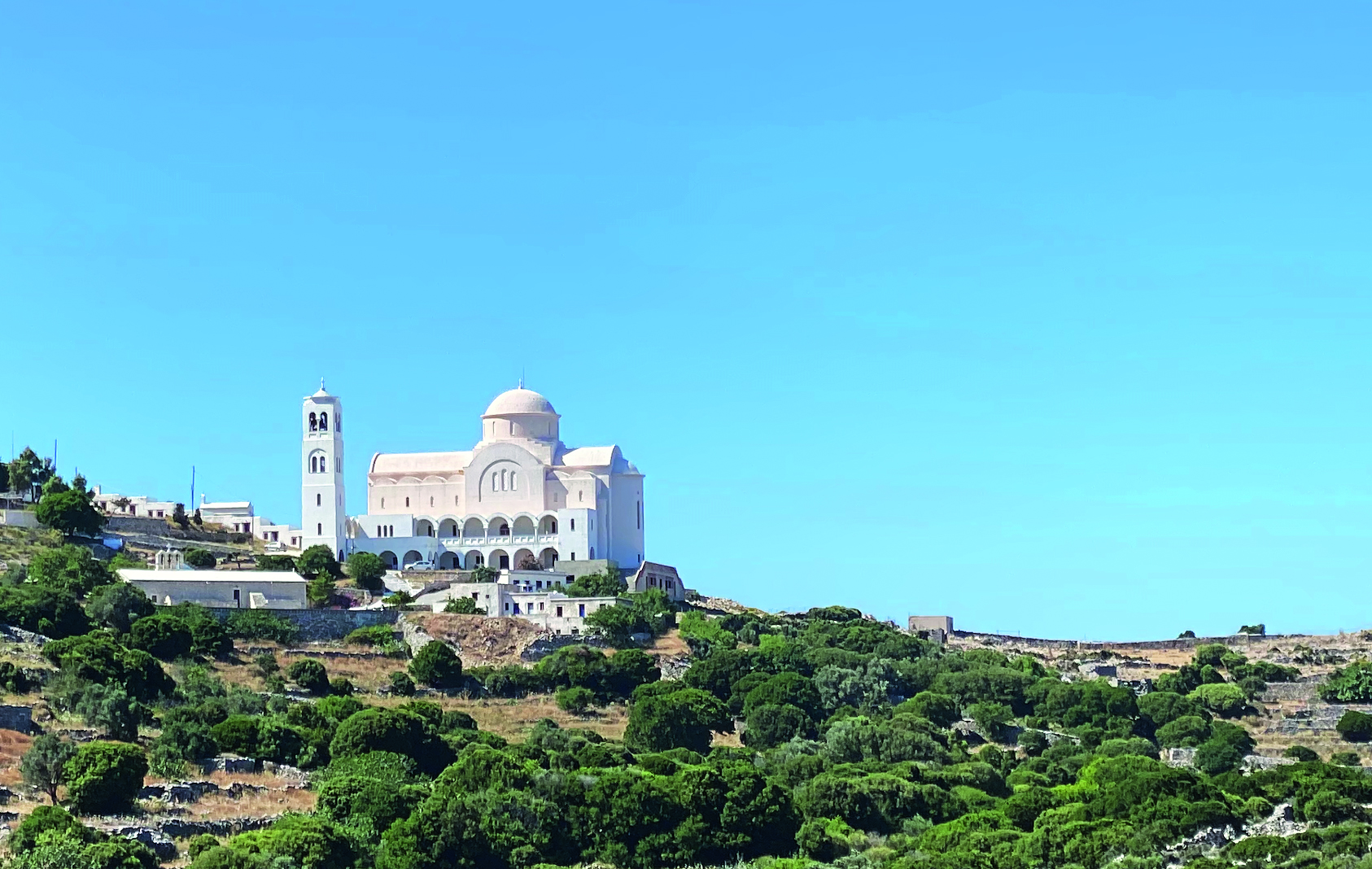
Contemplating this endeavor, I couldn’t help but feel that altering such an extensive urban monument in the pristine northern part of Naxos to promote the island’s religious wealth, which is already shared among hundreds of tiny chapels, would be a regrettable outcome. These silent witnesses are now given a voice, thanks to archaeologists. Perhaps a different approach to development in northern Naxos would be more appropriate.
